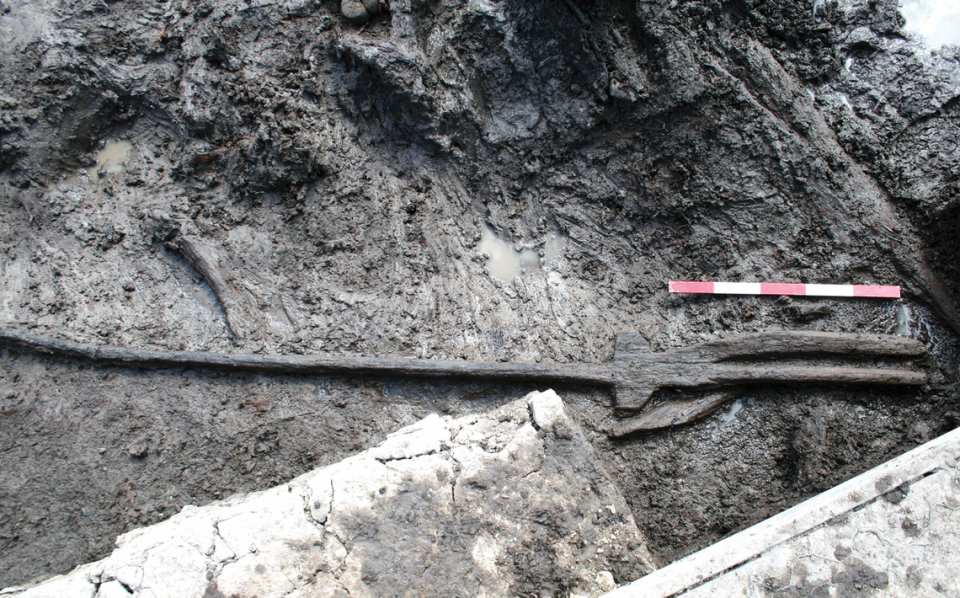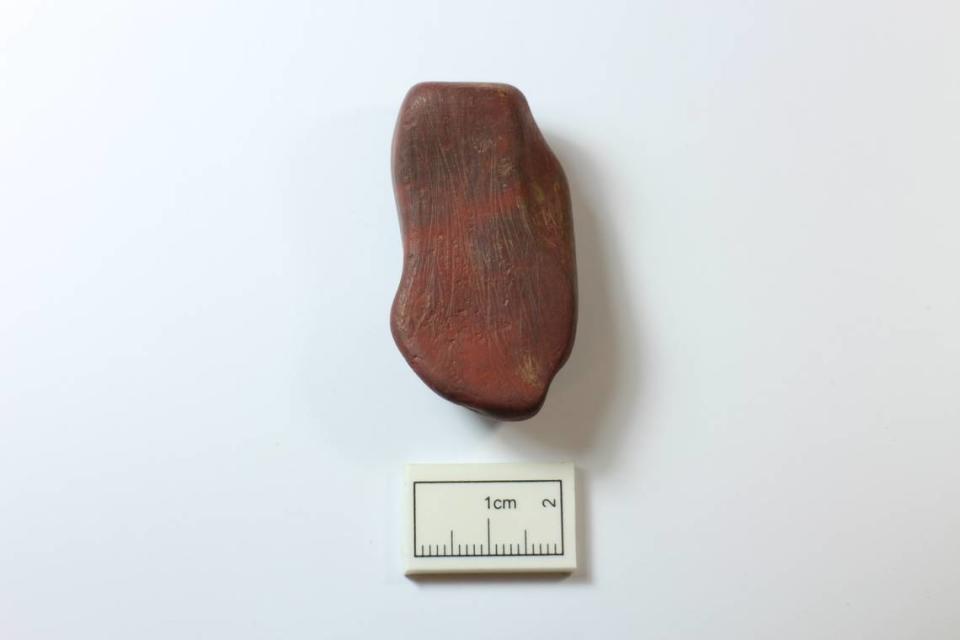8,000-year-old encampment — with tridents and war paint materials — found in England
While excavating a floodplain in England, archaeologists stumbled upon an ancient site where hunter-gatherers once dined, danced and performed rituals.
The site, which dates back to 6,000 B.C., functioned as a Mesolithic mecca, seasonally drawing large groups from far-flung corners of northern Britain.
“It’s not a very typical site,” Fraser Brown, an archaeologist who worked on the excavation, told McClatchy News. “We knew we had something pretty unusual.”
It was uncovered by happenstance. While digging up a narrow stretch of land near Carlisle to make way for a road, archaeologists with Oxford Archaeology began pulling up troves of prehistoric artifacts.
For months, a team of more than 50 people sieved a muddy area the size of a football field, ultimately unearthing over 300,000 artifacts, including flint arrowheads and wooden tridents.

“It’s certainly one of the largest lithic assemblages ever recovered in Britain,” Brown said.
Based on the findings, archaeologists surmised the area, once an island on the Eden River, was occupied by hunter-gatherers during the spring or winter months. Large groups of prehistoric people traveled to the island from over 100 miles away, likely fishing the river during a time of year when food was scarce.
At a time when people generally lived in small family bands, it’s likely that more than 100 early Britons took refuge on the island at a time.
“You can use ethnographic analogy to imagine all the other things which would be happening in the background, which would include feasting, gossiping and storytelling,” Brown said.
Hundreds of pieces of ochre, a type of clay, were also discovered. It would have been ground into a red pigment used for a number of practical and ceremonial purposes.

The ochre “was probably not for everyday use,” Brown said. “People probably painted themselves for hunting rituals or dance or for burial rights.”
The material has been used by hunter-gatherers to make dye, bug repellent, sunscreen, glue and even medicine, Andrew Needham, a lecturer in early prehistory at the University of York, told McClatchy News.
To fashion body paint, it was typically mixed with animal fat. When it came to funerals, it was usually sprinkled into open graves, Needham said.
“When people look at the Mesolithic and prehistoric people they can be quite two-dimensional, imagining them as widgets wandering the landscape looking for food,” Brown said.
“But, of course they’re just people like you and I,” Brown said, “and they’re going to have very rich social and cultural lives, and because they don’t have much materiality, perhaps even more so in terms of their imaginations, stories and myths.”
After the hunter-gatherers, the island was also used by Neolithic farmers around 3,800 B.C., proving it had some sort of lasting appeal, Brown said.
Even the Romans, thousands of years later, decided to put down roots in the area. They constructed Hadrian’s Wall, the northern boundary of their sprawling empire, just a stone’s throw away.
Stone wall uncovered in Italy was a Roman temple 2,000 years ago. See what remains
Decapitated skulls — full of cavities and gems — from ancient Maya uncovered in Mexico
Bumpy baby creature found on ‘sky islands’ in Vietnam — and discovered as new species

